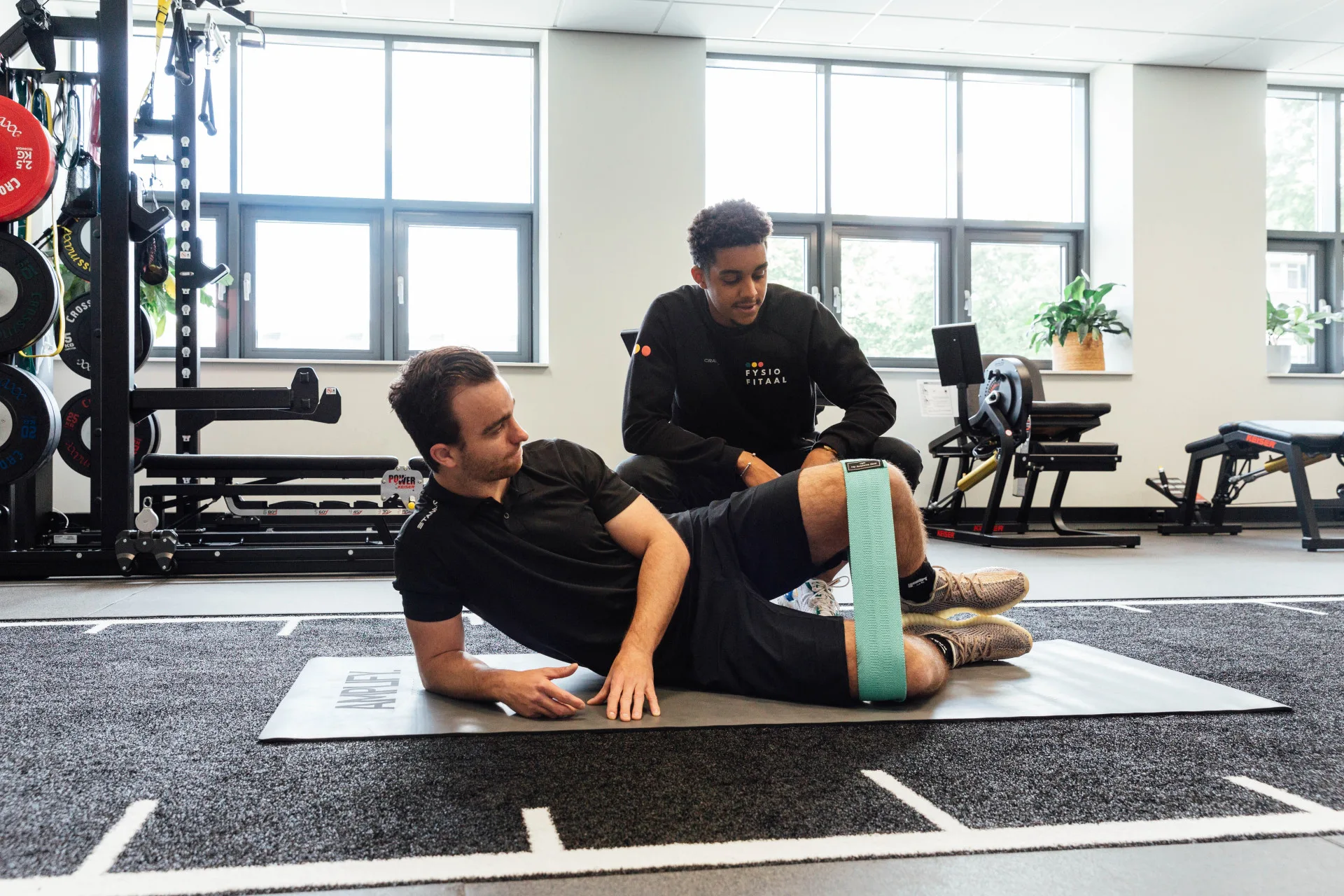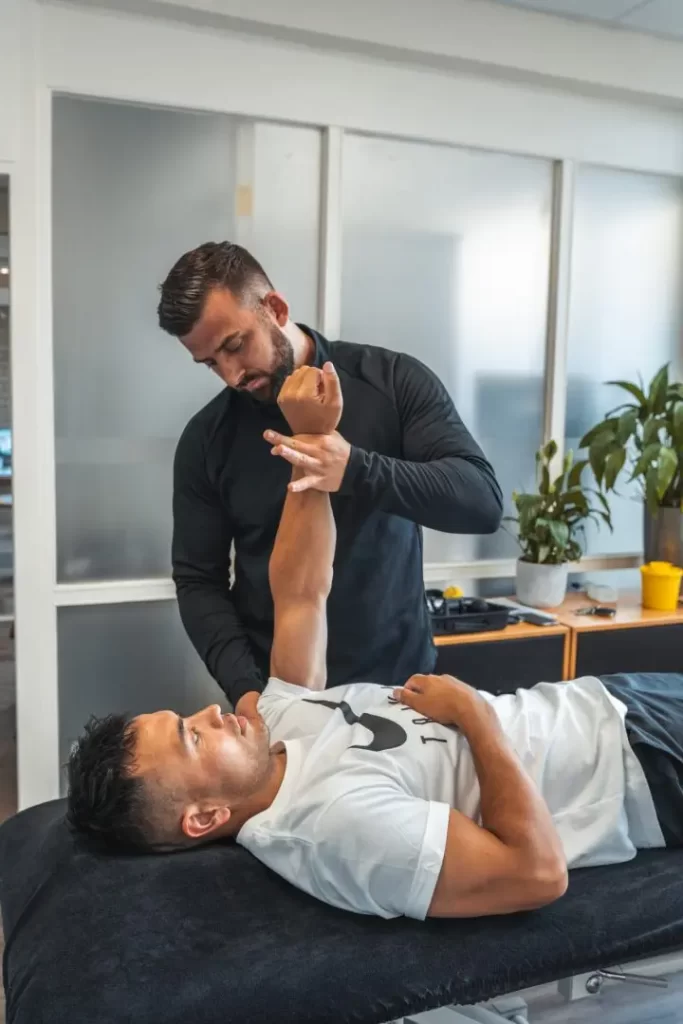Hip complaints
Hip pain can occur at any age. The cause of pain from the hip can be very different. Think of groin pain after sports like football or running or wear and tear of the hip joint. To eventually relieve the pain, it is important to know where the source of the pain is located. Sometimes it is not clear whether the pain comes from the hip joint or is caused by another structure somewhere else in the body, such as the back, pelvis or knee.
The hip forms the connection between the femur and the pelvis. The thigh bone (femur) together with the socket of the pelvis (acetabulum) form the hip joint. Between these bone parts is cartilage that ensures that the hip can move smoothly. The hip joint is a ball and socket joint. This means that the hip naturally has a lot of freedom of movement. The hip is passively stabilised by means of ligaments. In the hip, the labrum provides additional stability. The labrum is a large, cartilage-like ring that seals the hip tightly. The labrum of the hip passes into the cartilage part of the socket of the hip. The hip contains many different muscles and tendons. The function of these muscles is to move and stabilise the hip during various daily movements. There are smaller muscles that are closer to the joint but also larger muscles that have a more powerful function. Anatomically, a distinction is made between a local muscle system and a global muscle system.

Cause
We often see hip complaints as a result of too much strain during sports. Groin pain in athletes is a good example of this. It often involves a muscle-tendon injury of one of the muscles that attach to the groin. Less often it is a tear in the muscle this often happens during an explosive movement and is immediately noticeable. Read here further on groin pain.
Hip osteoarthritis is age-related in most cases and is most common in people over 50 years old. The symptoms often consist of stiffness and usually characterised with a deep pain in the groin. Sometimes there is also buttock pain. The diagnosis of hip osteoarthritis is made by a doctor. This involves an X-ray to see the condition of the cartilage in the hip. Read here further on hip osteoarthritis.
Bursitis of the hip is also a common cause of hip pain. With bursitis in the hip, you notice pain on the outside of the hip. Lying on it is difficult and often causes immediate symptoms. The pain can sometimes radiate to the buttock or even the lower back. A typical feature of bursitis in the hip is nocturnal pain.
The labrum, like the meniscus in the knee, can be injured or damaged. This also often causes groin pain and is described as a deep pain in the hip.
Common Hip complaints

Iliotibial band syndrome
In most cases, irritation of the iliotibial band causes pain on the side...

FAI Impingement
In FAI impingement, the hip joint does not function as it should because the neck of...


Hip Osteoarthritis
During ageing or damage, the quality of connective tissue decreases. As we age...
Risk factors
Risk factors
Gradations of muscle injury
Gradations of muscle injury
The different type x injuries
The different type x injuries
Anatomy of x
Anatomy of x
Physiotherapy and hip pain
With hip pain, it is important to also examine the low back along with the pelvis and knee. The cause of pain in the hip could possibly come from somewhere else. During the examination, we will look for the cause of your hip pain. Based on the examination, a clear treatment plan will be drawn up. We think it is very important that you understand how possible complaints arise and what you can take into account to recover from your symptoms as quickly as possible!
Besides targeted advice, treatment may include increasing hip mobility through manual therapy, dry needling, various muscle techniques and training the muscles of the hip and low back through exercise therapy.
Different phases of treatment
Different phases of treatment
Physical testing
Physical testing
Making an appointment at FysioFitaal
We work from multiple locations in Tilburg, always close by for professional and accessible physiotherapy. Fill in the contact form and we will contact you soon. Together, we will work on your recovery!

